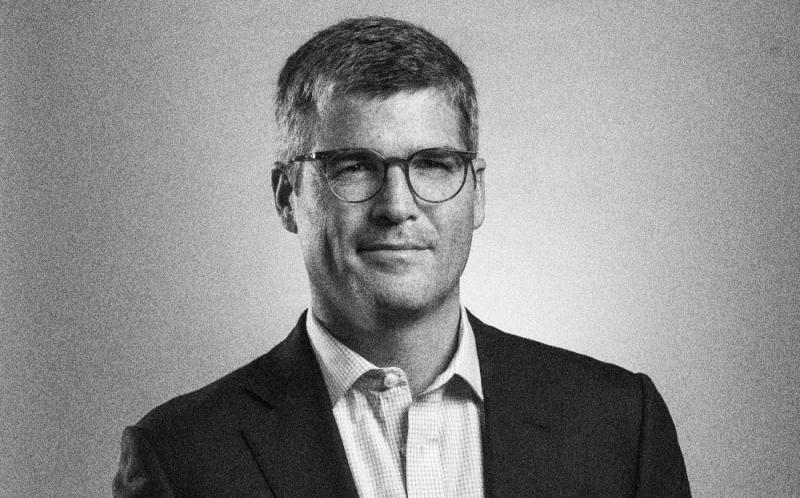A common maxim in the advisory space suggests that clients want to work with advisors who look like them. However, one RIA is taking precisely the opposite approach – and succeeding.
In a 2018 Cerulli Associates study of the fastest-growing RIAs in the U.S. based on assets under management, The Mather Group (TMG) ranked first among firms managing more than a billion in assets. The Chicago-based boutique, fee-only firm’s assets spiked 152% that year. Today, TMG manages $4.36 billion.
Especially eye-opening are the relative youth of TMG’s founder and staff. Stewart Mather, who worked at UBS from 2002-2008, and was a SVP at Morgan Stanley from 2008 to 2011, launched the firm in 2011 when he was 32. (He’s now 41). The median age of his staff is a youthful 31.
Organic growth and M&A are key components of TMG’s strategy. Last year, it acquired Astraeus Advisers with $1 billion in assets and RPH Financial with $160 million in assets. And in 2018 it scooped up Berman Advisors with $1 billion in assets. On December 17, 2019, it acquired Daniel Advisors, an Atlanta-based firm, with $110 million assets. Mather, who insists his firm has no plans to become a mega-RIA, said he expects to announce another acquisition in the coming months.
TMG has 72 employees, including 37 advisors, in Chicago, Atlanta, Dallas, the Philadelphia area, and San Francisco, among other places.
Mather’s office is located in the heart of Chicago’s downtown area, overlooking the Wrigley clock tower. Photos of his wife and three children—with a fourth due within weeks —adorn his desk, alongside a painting of his favorite New Orleans blues musician, Professor Longhair.
In a recent phone interview from his office, Mather discussed with me his firm’s growth strategy, investing approach and reasons for using younger advisors to pursue older clients.
What’s been the key to the rapid growth in assets under management?
We don’t carry a brokerage or insurance license, so we authentically are a fiduciary-only firm. Additionally, we have a next-gen staff, with an average age of 31 that drives innovation. It’s this innovation that has produced a mature platform for us to deliver a comprehensive suite of services—in-house tax preparation and advice, estate planning, financial planning, investment management, and family office advisement.
You describe offering legal services and estate services as a differentiator. But these are commonplace. How is it a competitive edge?
The fact is most firms proclaim that they offer these services, but they outsource them. We don’t. I have tax attorneys, CPAs, and estate planning attorneys that are employees of the Mather Group. I’m not outsourcing it. That’s the difference.
How specifically does that help your clients?
It’s the difference between having a one-stop shop and not having one. It simplifies their life because they’re dealing with one firm and not multiple ones. Furthermore, you have your estate planner coordinating with your CPA all in one room. The bulk of the industry says it’s holistic but at the end of the day they’re outsourcing it.
Why do you consider having a staff with a youthful median age of 31 an advantage?
Having a younger staff drives greater innovation because they view technology differently than someone in their forties and fifties. I’m not at liberty to disclose the details, but they are driving innovation that allows us to scale the business in a way that allows us to deliver all those services for the same prices as our competitors are pricing theirs, without those services included. In addition, we’ve had an all digital infrastructure since 2014. We have zero paper.
Most of your clients are pre-retirement or retired. So why would a younger staff be a benefit?
If you think about it, hiring someone to manage your life saving through retirement is one of the biggest decisions you’ll make. Many of our clients have interviewed three to five financial advisors before they hire us and they don’t want to go through it again. When they hire a next gen professional, they can have a long-term relationship throughout their retirement. In fifteen years, when they’re in their late 70s, they will have their advisor and won’t have to go through it again.
Isn’t there an argument for hiring a more seasoned staff of advisors aged 50 plus and older?
It’s a major disadvantage. Number one, people coming to us are thinking about retirement advice, and don’t want to hire someone in their fifties, who’ll be retiring on them. Our target market is professionals from Fortune 1000 companies and they work around people who are younger than them. They see their innovation and want to work with millennials. They see their value and are comfortable working with people in their thirties.
How do you recruit talented next gen advisors?
We’ve done all the fun things like pool tables, beer on tap, and arcade machines. But the real reason the next gen talent comes here is when they look at the staff on our website, there’s a sea of young, accomplished professionals that are here. If you couple that with being located downtown Chicago in one of the great affordable cities, it makes sense. And you don’t have to live in the middle of Kansas. In addition, we get a tremendous amount of inbound resumes because there are no other firms like us. At most RIAs you look at, the staff is 60 years plus. Young people with multiple credentials like CPA, CFP or JD, don’t want to be the youngest person in the office. They want to be around young people in a tech-forward firm.
You anticipate $5 billion of organic growth in the next three years. How will that be achieved?
To be candid, it has to do with our pipelines. There are a lot of existing clients, who have been with us for decades that are retiring, and they have assets that need stewardship. The growth will come from them, potential clients who are introduced to us via referrals, and people who have been talking with us for several years. So it’s a third from existing clients rolling over, a third from new clients from referrals, and a third from our business development efforts that have been ongoing for a decade.
How much debt are you carrying?
We are family and employee-owned. We use a combination of debt and our own cash or equity, but we have no outside investors. If we were to consider outside investors, it wouldn’t be private equity. I’m 41, and I plan on doing this for another 30 years. I don’t want to have a new owner, every five years or so, I’m beholden to.
You’ve said that your services transcend those of a private bank. Can you cite examples?
Astute families recognize that those banks have an inherent conflict of interest. The private banks have their own proprietary products and solutions. That employee is incentivized to push the bank’s own lending solutions, their own preferred list of hedge fund, and private equity firms, many of which have to pay to be on their platforms. If any of our clients need a solution, we’ll shop it around to JPMorgan, Bank of America, and local lenders, to bring the best solutions to our clients.
When the Mather Group looks to acquire another RIA, what specifically are you seeking?
We’re interested in working with fiduciary-only founders that share our investment philosophy of focusing on low-cost, tax efficient investments, that are a cultural fit and are looking to be a part of a national boutique. They aren’t looking to join a mega-RIA. Everyone rebrands under the Mather Group umbrella; we’re one brand and one platform.
Once you buy a firm, what specifically do you do to drive new business?
When you bring a partner firm onto our platform, they can offer more services, which leads to referrals and clients bringing outside money. And these folks don’t have to deal with compliance, HR, and technology, so they can focus more on new business development and finding new clients. We not only drive more value but we simplify their lives.
Describe your firm’s approach to investing.
We are hyper-focused on fees and after-tax returns. Many of these private banks and wirehouses have these sophisticated investment solutions. Their rate of return before fees looks good, but after you subtract taxes on their tax returns from capital gains and fees, those gross returns can drop by a full two percentage points. And unless clients take their tax returns and add up capital gains, they’re none the wiser.
Who’s the target client of the Mather Group?
Our minimum investment is a million dollars. Therefore, we attract the millionaire next door. Our typical client is nearing retirement or in retirement and they’re looking for a firm to simplify their lives by providing the comprehensive suite of services and give them the peace of mind that their money will last through retirement.
What could derail growth?
There’s nothing that keeps me up at night. I think that we as a boutique can be very agile and that puts us in a position to adapt to the marketplace that I know will be changing rapidly.
Two years from today, where do you expect the Mather Group to be?
I’d imagine we’ll probably have twice as many employees. We will be in a dozen new markets. I don’t like to focus on AUM with targets, since we focus more on profitability and revenue growth.
Thank you, Stewart.





